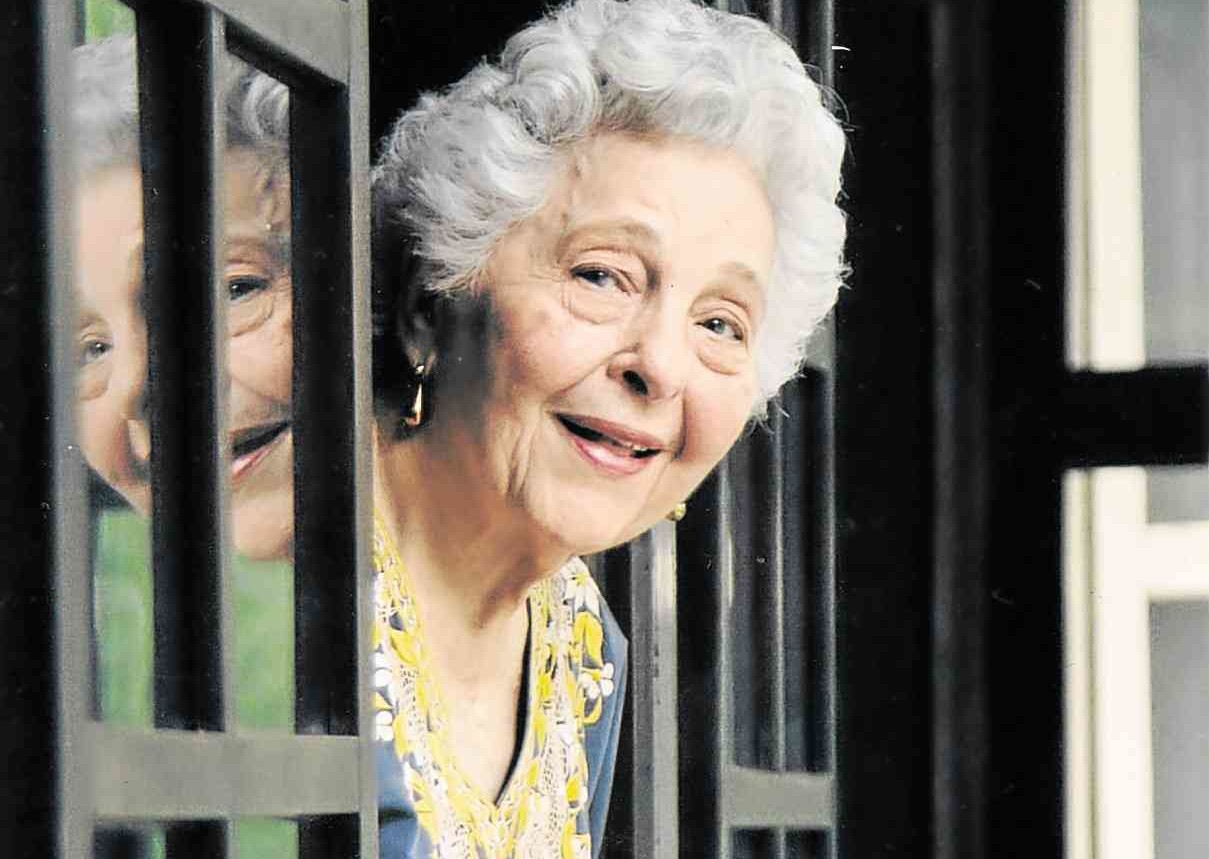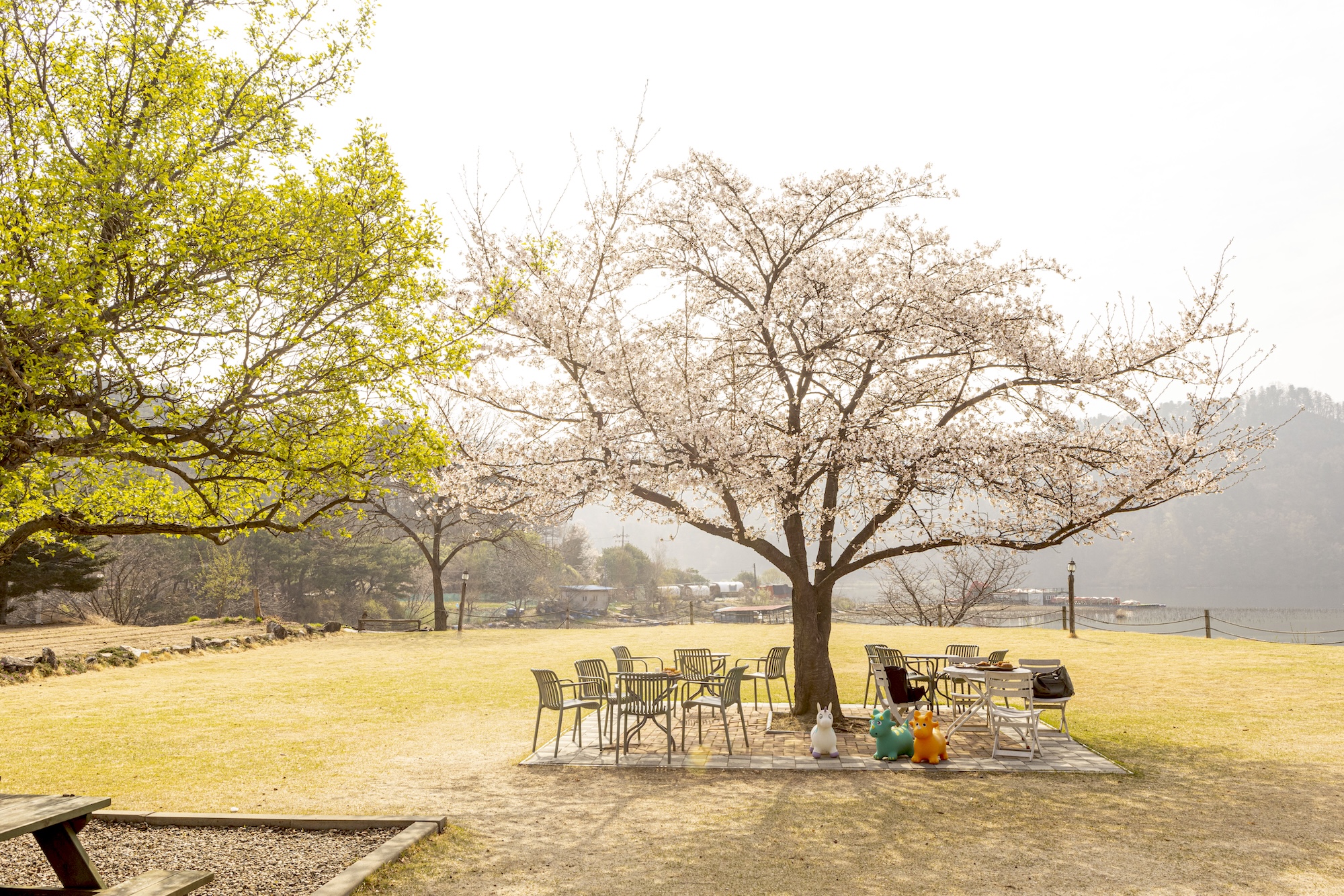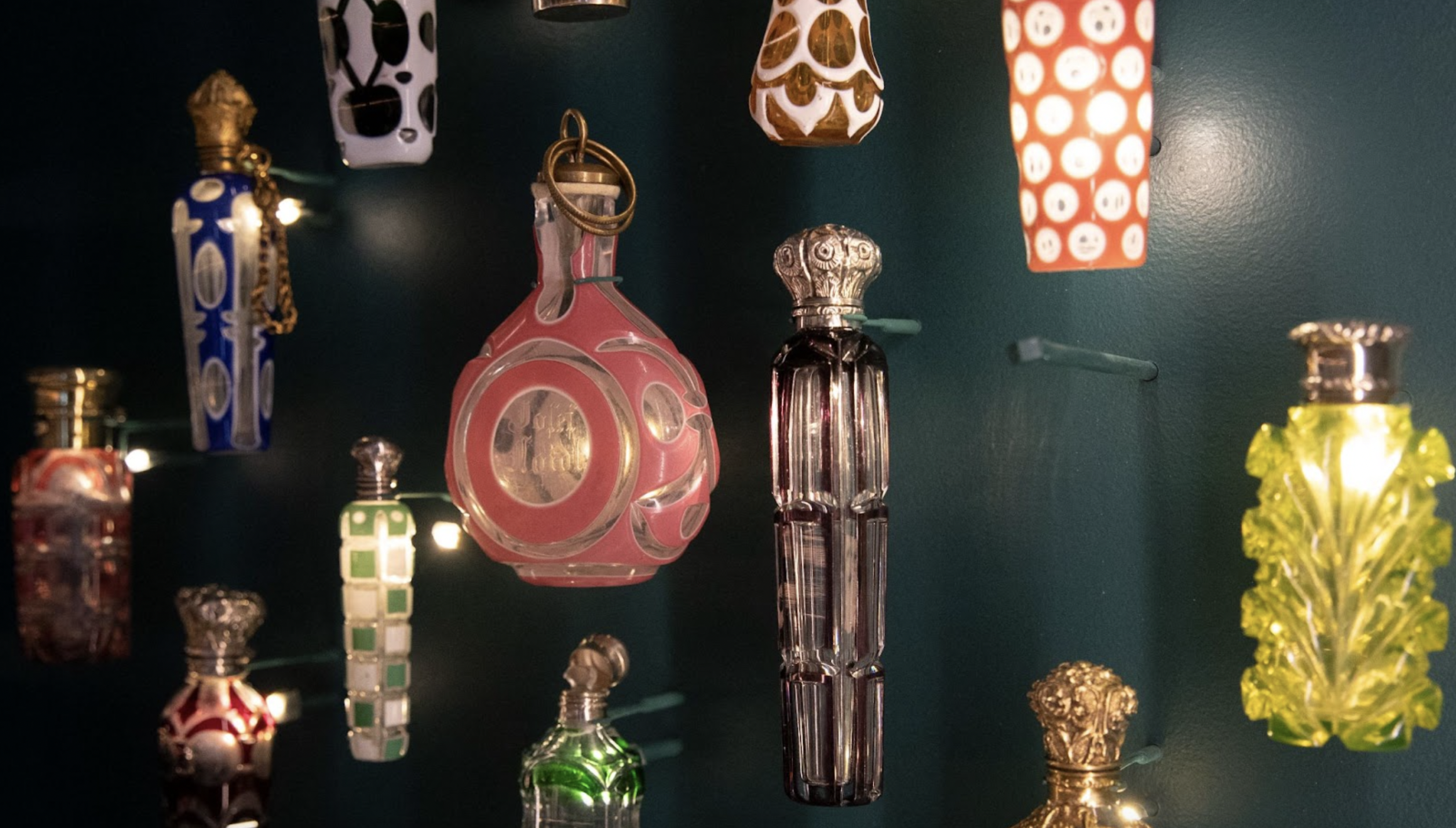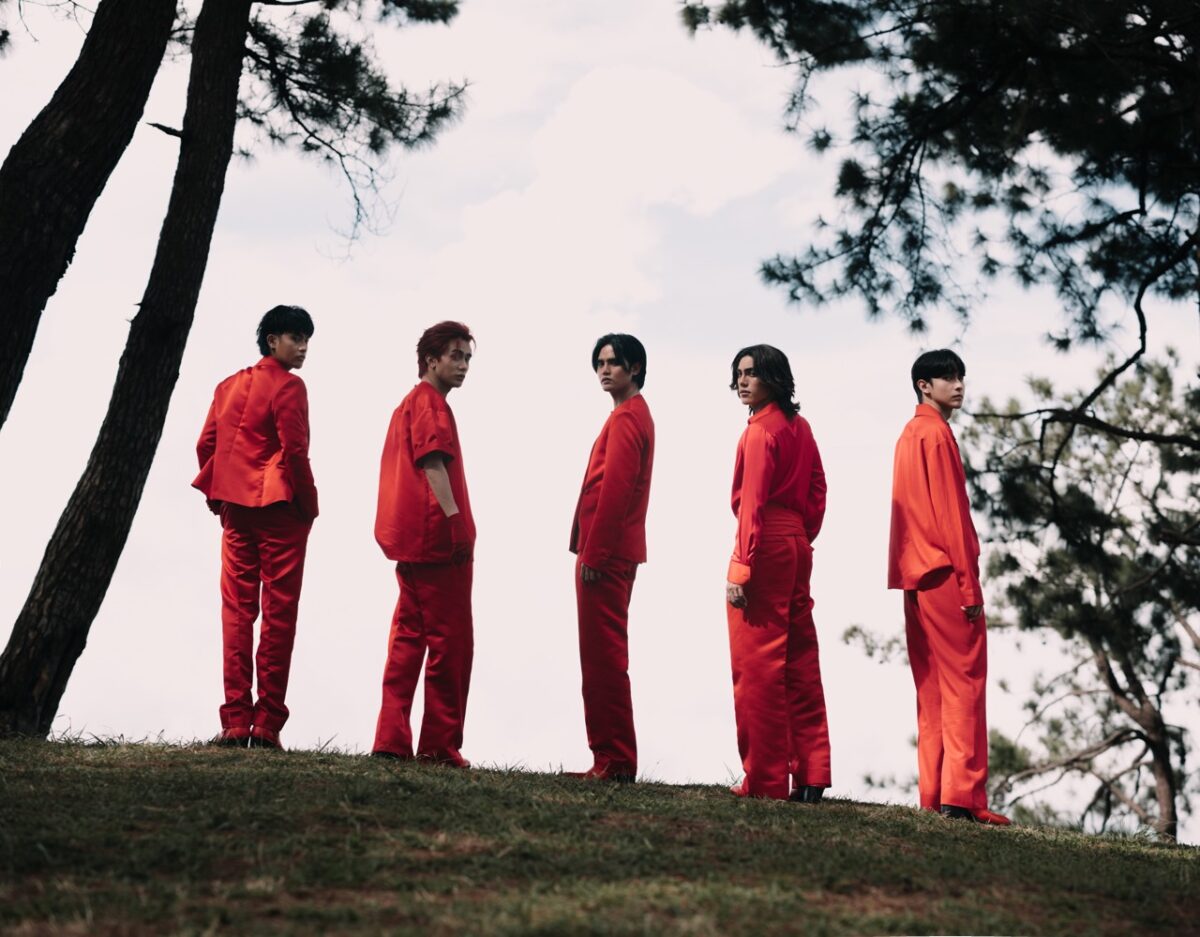In Buddhism, a bodhisattva is an enlightened being who, out of compassion, chooses to remain in the world of suffering to help others along the path to liberation.
I have never met a bodhisattva, at least, as far as I know.
But if ever I do, I imagine he or she would be someone like Jessie Lichauco, “Tita Jessie” to nearly everyone who has ever met her.
At 104 years old, she still looks at the world with a clear-eyed sense of curiosity and good humor, and at the fellow human beings that life sends her way with a rare openness, empathy and acceptance.
I have met only one or two people with this aura about them, and they had arrived at this state of grace after years of intensive study and rigorous spiritual practice.
Tita Jessie, as far as anyone can remember, has been always this way.
“She’s like a 104-year-old Buddha,” says granddaughter Sunshine Lichauco de Leon. “Maybe that’s why people are drawn to her. She’s touched so many lives, and they remember.”
Tragedy
I first met Tita Jessie 30 years ago. It was a horrific family tragedy that sent me, as a journalist, knocking at the gate of the 150-year-old Lichauco house along Herran Street in old Sta. Ana.
Rex Baquiran, the husband of her daughter Loretta, was a progressive-minded military officer who had gone into the Cordillera to help villagers form a coffee cooperative. But the New People’s Army accused him of being a spy, and had kidnapped, tortured and executed him.
Loretta Lichauco kept a remarkable composure as she described how her husband’s mutilated body betrayed evidence of savage torture that went beyond any tactical necessity.
Her mother stayed silent in the background; perhaps her presence helped her daughter keep it together where most would have fallen apart.
Happier
I met Tita Jessie again six years later, under somewhat happier circumstances.
I was visiting with my brother-in-law’s family in Massachusetts, and they took me to the Lichauco house in Belmont, a suburb of Boston.
The Lichauco house was a sort of informal clubhouse for Filipinos studying in the Boston area. There, Tita Jessie played den mother to a revolving group of Filipinos, mostly students at Harvard, Massachusetts Institute of Technology and Boston University.
By then she was already in her 80s, a lively, silver-haired figure in brightly-colored caftan. But the entire household—mostly young men in their 20s—seemed to center around her.
“That’s one theme in her life,” says De Leon. “She has provided a home for people who needed one, wherever they were. When she was living in London, she had the doors open to every Filipino in London during those years, and in Boston it was the same thing. It seems she has spent her life inadvertently providing a home for people, in those places that are not theirs, whether it’s foreigners in the Philippines, or Filipinos in London or America.”
Gala premiere
A freelance journalist who writes for the international press, De Leon felt compelled to tell her grandmother’s remarkable life story shortly after returning to the Philippines 10 years ago.
It started out as a biography, but somewhere along the way, it turned into “Curiosity, Adventure and Love,” a documentary film on the life of this remarkable woman, which had its gala premiere last July 2 at the World Premieres Film Festival Philippines.
“It was never my dream to make a film,” says De Leon. “I had no concept of how to make a film. But the story drove me. It was going to be a book, but a very wise person told me that the fact that she can speak and tell her story is far more compelling.”
At one point in the film, Tita Jessie says:
“I can’t imagine living all over again. It would be impossible for anybody to live the kind of life that I have lived.”
Singular
It has, in fact, been a singular journey. If one believed in fate or predestination, one might speculate that the thread of Jessie Lichauco’s life was meant to intersect with that of her adopted country, even before she was born.
Her father was an American officer during the Spanish-American War—the same conflict where Spain ceded the Philippines to the United States. He settled in Cuba after the war, fell in love with a Cuban woman, and in 1912 Jessie Josephine Coe was born.
She spent the first 10 years of her life on one of Hemingway’s “Islands in the Stream.” It would have been an idyllic childhood in the tropics, if both of her parents didn’t die young.
“She had to raise herself,” says De Leon. “She told me she became reliant on her own self, because she had to be.”
The orphaned Jessie was sent to live with relatives in the city of St. Augustine, Florida, where she attended a convent school.
In the film, it is pointed out that St. Augustine was where Ponce de Leon searched for the fabled fountain of youth, which might explain her longevity and her youthful outlook on life.
‘Ilustrado’
In any case, after leaving the convent school, she made her way to New York where she would meet the man who was to become her husband, and the father of her seven children.
Marcial Lichauco had been born to a prosperous and prominent family in 1902. His father was a member of Aguinaldo’s revolutionary government.
In the “ilustrado” tradition, Marcial went to the United States for college, becoming the first Filipino to graduate from Harvard in 1923. He went on to earn a law degree from Harvard Law School three years later.
In the early 1930s, he was persuaded by his law partner, Manuel Roxas, to become the secretary of Osmeña-Roxas Mission, whose sole purpose was to lobby for Philippine independence in the US Congress.
It was during this time that Marcial was introduced to Jessie.
Although he was 10 years older and already an official of the Philippine government, and she barely out of convent school, they hit it off, and before Marcial left for the Philippines, having accomplished his mission with the passage of the Hare-Hawes-Cutting Act, he invited Jessie to come visit him in his home country.
In 1933, the 18-year-old Jessie found herself journeying, alone, to a country she knew very little about.
The train journey to California took a week, and the ocean voyage to Manila nearly a month; and this at a time when a young girl venturing out into the world alone was all but unheard of.
But she was possessed of three attributes that carried her to these shores: boundless curiosity, a sense of adventure and love
—hence the title of the film.
And although today Tita Jessie doesn’t get around as much as she used to, these three attributes continue to govern her life.
Marcial met her at the pier. Within weeks the couple were married. Together they would weather World War II and the Japanese occupation of Manila, which Marcial would later record in “Dear Mother Putnam,” his memoir of daily life in the occupied city.
Heritage house
In the last days of the war, the Lichauco house became a way station for refugees fleeing the devastation of the city, which is part of the reason it was declared a “heritage house” in 2010.
Marcial and Jessie would have seven children: Cornelia Beatrice, Loretta Ramona, Sylvia Maria, Marcial Jr., Tomas, Jessie Joanne Valentine and Faustino Antonio.
Marcial would later become one of the country’s ambassadors, most notably to the Court of St. James, and wherever the family found themselves, Jessie would invariably open their home to homesick Filipinos.
Jessie also joined the Asociacion de Damas de Filipinas, a charitable organization caring for abandoned, neglected and orphaned children. She was one of the founders of Red Feather Agency which later became the Community Chest, an organization that raised funds for other charities.
And in a private capacity, she helped hundreds of children, putting many of them through school.
“She has a soft spot for children in need,” says De Leon. “You can surmise that perhaps it’s because she was alone as a child, and deep down, probably recalls what it was like not to have a mother, not to have anyone. I’m sure she identifies with children who have no parents or who get abandoned.”
‘Other children’
After Marcial’s death in 1971, Jessie devoted more of her time to helping children in need.
Over the years, she divided her time between caring for her children and grandchildren as they built lives for themselves abroad, and going back to her home in the Philippines to care for her “other children,” the ones in need that she took under her wing.
When all her children were settled and secure, she returned home to her house by the river in Sta. Ana, where she lives to this day.
Ten years ago, De Leon moved to the Philippines to work as freelance journalist, and got to know her grandmother even better.
“We have this great symbiotic relationship,” De Leon says. “We’re friends. I’ve learned to see the Philippines from a different point of view, through her eyes, and she’s taught me a lot of things about it.”
“She’s also my anchor,” De Leon continues. “She’s just a really good source of wisdom and advice on anything. She listens well and doesn’t judge, and is quite insightful. She’s got a good eye for people.”
Citizenship
In 2012, for her 100th birthday, Jessie got an unexpected gift. Through an act of Congress, the Senate granted her Philippine citizenship. It made official what Jessie had always felt since marrying Marcial in 1933: This was home.
It took seven years to complete “Curiosity, Adventure and Love,” says De Leon, who enlisted the help of US-based filmmaker Suzanne Richiardone as coproducer and codirector.
“It’s a unique opportunity to get people interested in the Philippines,” De Leon adds. “At the same time I think she has great wisdom and insight to offer. She’s a great example of how we can live, if we want to.”
Back when the project was still a book, De Leon wrote, by way of prologue:
“Some people come into your life and leave a footprint. My grandmother leaves something stronger and lasting in a different way: She infuses you with part of her spirit. Whether you meet her for a moment or a lifetime, your life is somehow affected. And this change can come from the simplest and most complex place: a piece of advice, a random act of kindness, a shared experience, a remembered part of history, or a perfectly timed anecdote.
“Many say that her great gift is her memory. This is without question. However, those who know her story understand that her even greater gift is her heart, as it overflows with empathy, compassion, tolerance and love—and I mean love in the universal sense of things. Combined with an insatiable curiosity, fearlessness and sense of adventure, her life has been a collection of moments spanning almost a century and across the globe which make one both dream, inspire and learn.”
“Curiosity, Adventure and Love” will be screened on July 6 and 8 at 7 p.m., at SM North Edsa, and on July 9 at 9 p.m., also at SM North Edsa. For more information, see @curiosityadventureandlove Facebook page.













































